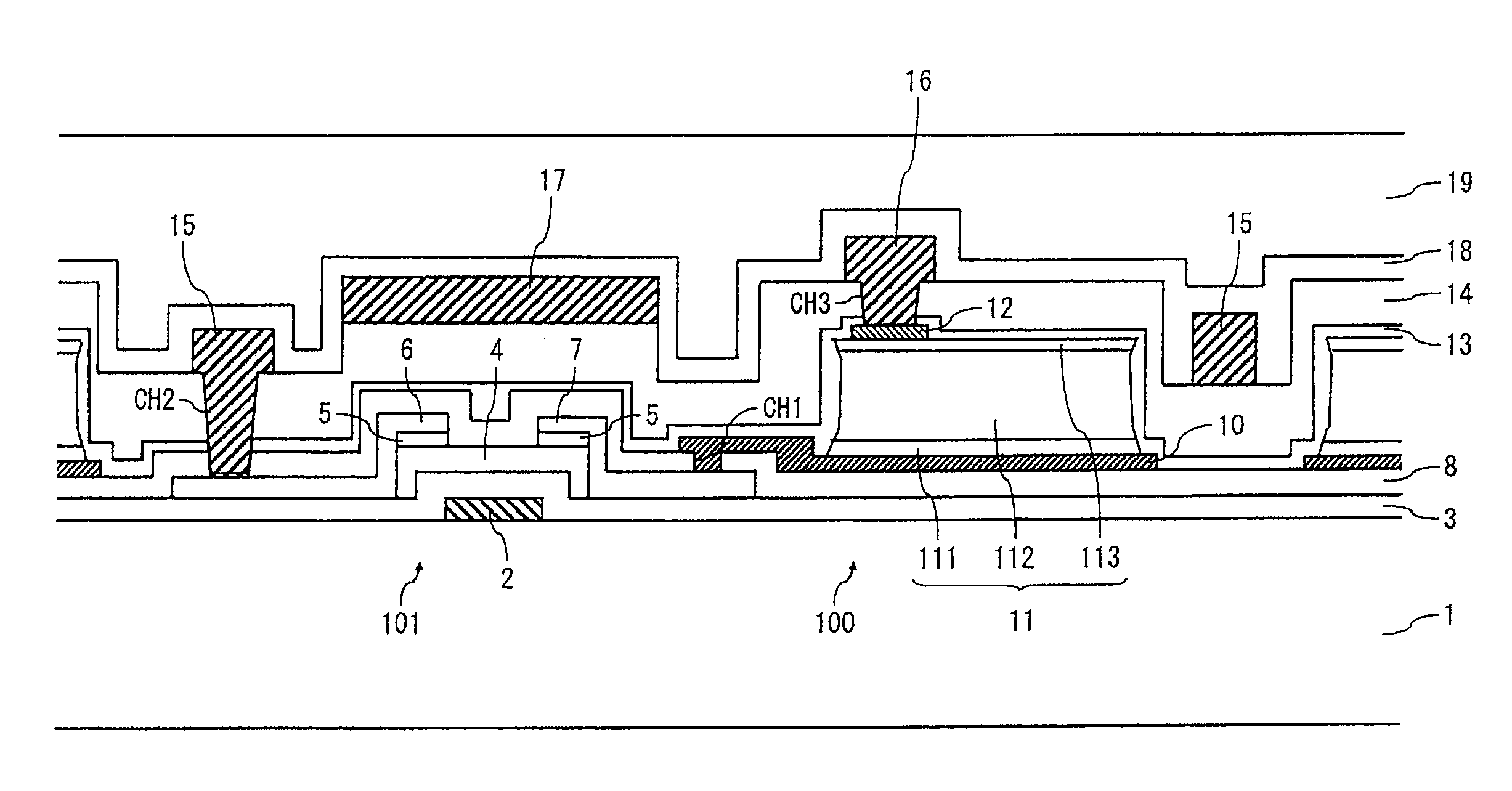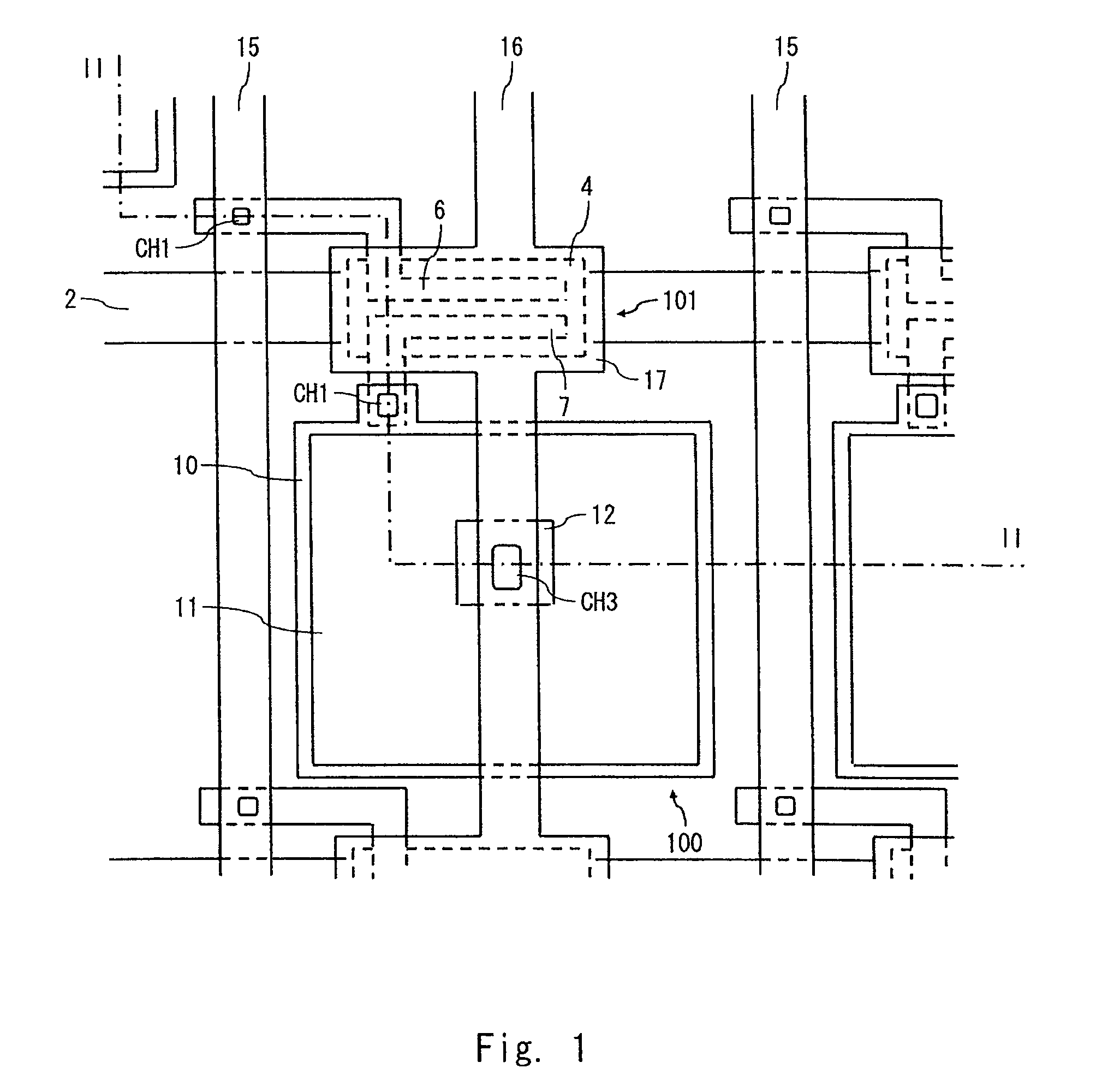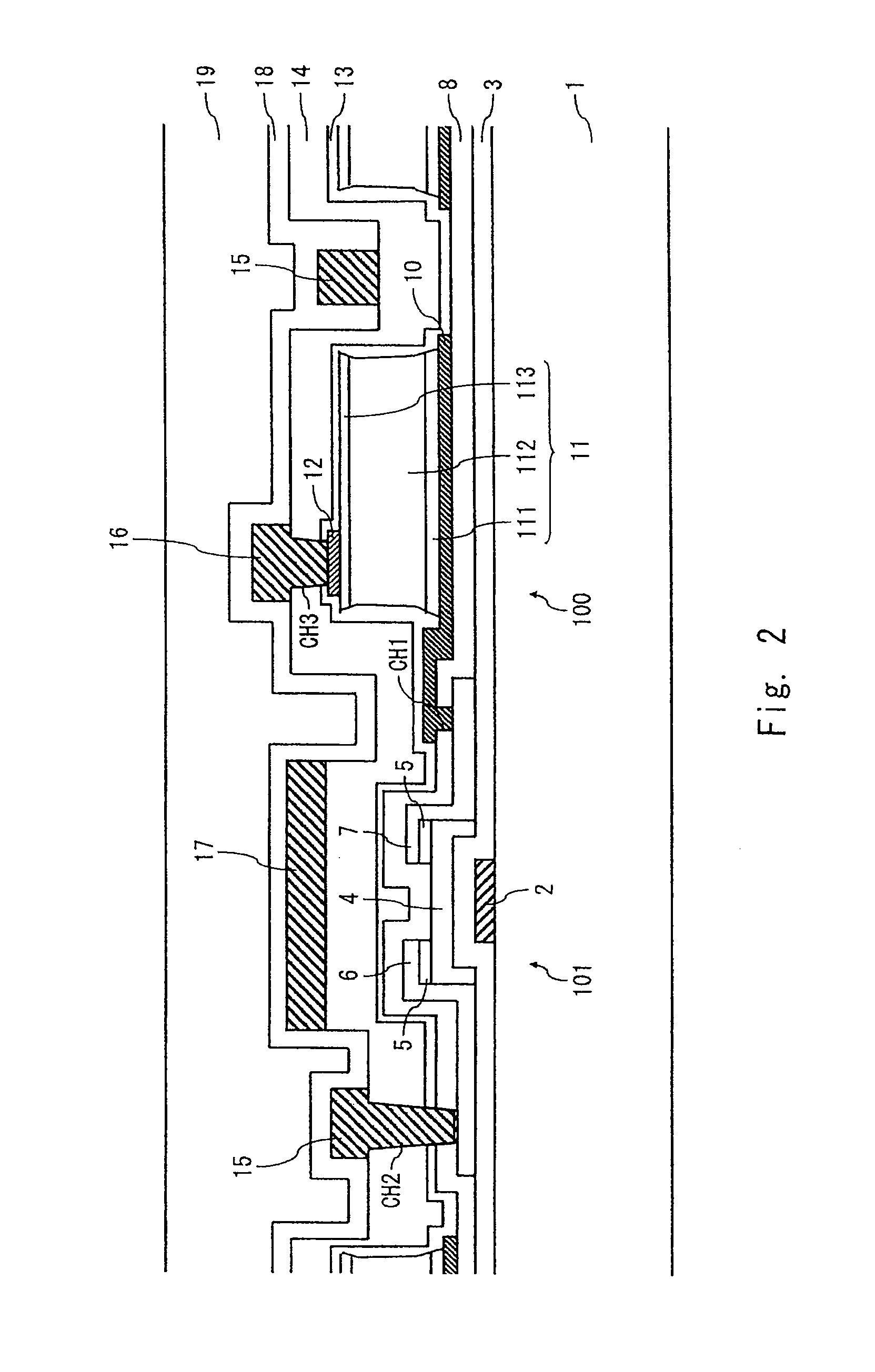Photoelectric conversion device and method of manufacturing the same
a technology of photoelectric conversion and conversion device, which is applied in the direction of semiconductor/solid-state device manufacturing, semiconductor devices, electrical apparatus, etc., can solve the problems of low spatial resolution, lack of immediacy, and disadvantages of upsizing limits, and achieve the effect of suppressing leakage curren
- Summary
- Abstract
- Description
- Claims
- Application Information
AI Technical Summary
Benefits of technology
Problems solved by technology
Method used
Image
Examples
first embodiment
[0035]A photosensor (photoelectric conversion device) according to an embodiment of the present invention is described hereinafter with reference to FIGS. 1 and 2. FIG. 1 is a plan view showing a structure of an array substrate used in the photoelectric conversion device according to the first embodiment. FIG. 2 is a cross-sectional view along line II-II in FIG. 1.
[0036]On the array substrate, light receiving pixel areas are arranged in an array. FIG. 1 shows one of the light receiving pixel areas. In each light receiving pixel area, one photodiode 100 and one thin film transistor (TFT) 101 are placed as shown in FIGS. 1 and 2. Accordingly, on the array substrate, the photodiodes 100 and the TFTs 101 are arranged in an array.
[0037]Hereinafter, an area where the photodiodes 100 and the TFTs 101 are arranged in an array is referred to as an element area, and an area outside the element area is referred to as a peripheral area. For example, the element area is formed like a rectangular...
second embodiment
[0112]A photosensor (photoelectric conversion device) according to a second embodiment of the present invention is described hereinafter with reference to FIGS. 7 and 8. FIG. 7 is a plan view showing a structure of an array substrate used in the photoelectric conversion device according to the second embodiment. FIG. 8 is a cross-sectional view along line VIII-VIII in FIG. 7. In this embodiment, an upper electrode and a second passivation film that are different from those of the first embodiment are formed. The other structure is substantially the same as that of the first embodiment and thus not redundantly explained below.
[0113]Referring to FIGS. 7 and 8, in this embodiment, an upper electrode 12a made of a transparent conductive film is placed on the photoelectric conversion layer 11. The upper electrode 12a is formed in the most part on the photoelectric conversion layer 11. In this example, the upper electrode 12a that is slightly smaller than the photoelectric conversion laye...
PUM
 Login to View More
Login to View More Abstract
Description
Claims
Application Information
 Login to View More
Login to View More - R&D
- Intellectual Property
- Life Sciences
- Materials
- Tech Scout
- Unparalleled Data Quality
- Higher Quality Content
- 60% Fewer Hallucinations
Browse by: Latest US Patents, China's latest patents, Technical Efficacy Thesaurus, Application Domain, Technology Topic, Popular Technical Reports.
© 2025 PatSnap. All rights reserved.Legal|Privacy policy|Modern Slavery Act Transparency Statement|Sitemap|About US| Contact US: help@patsnap.com



